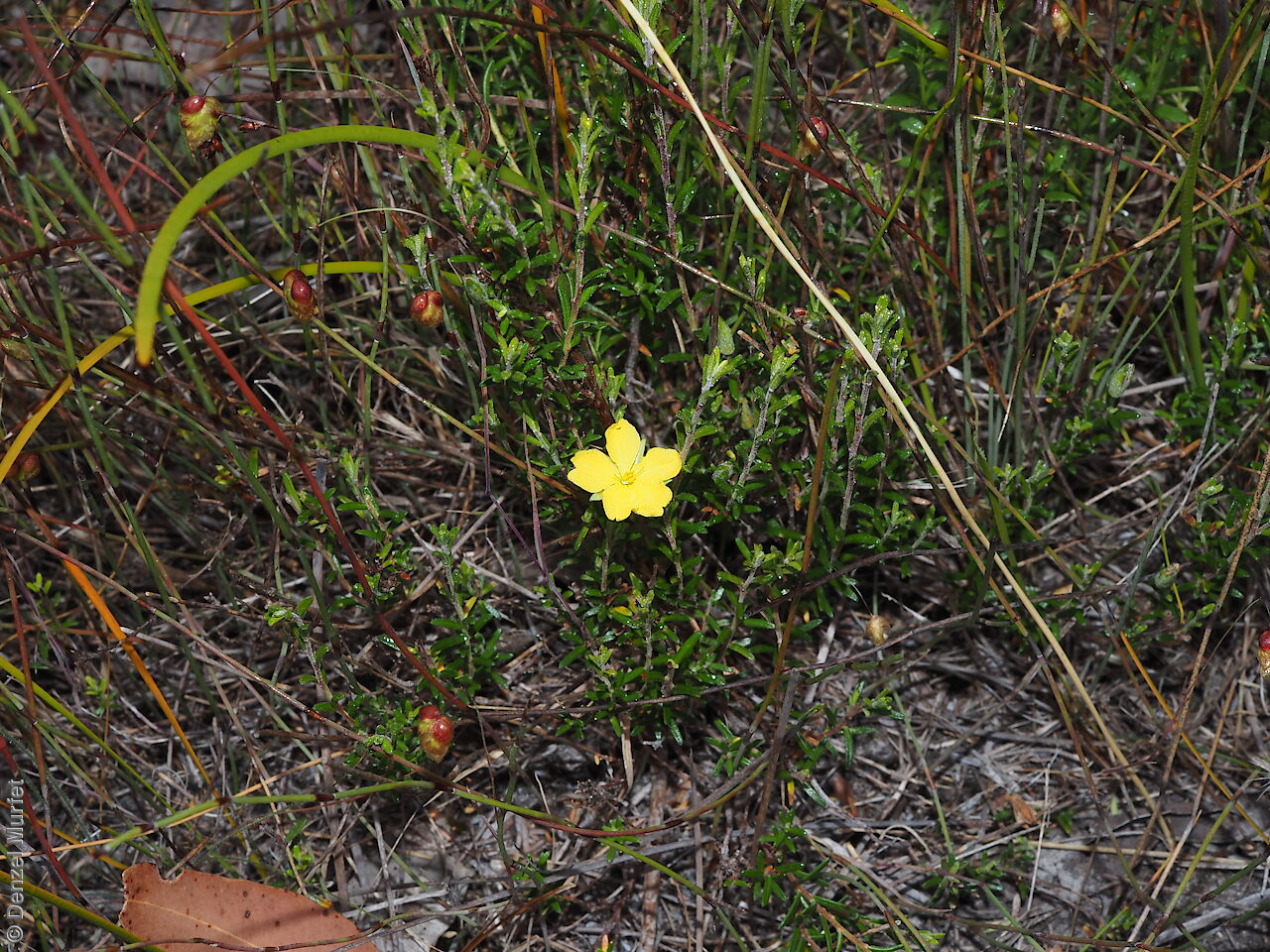
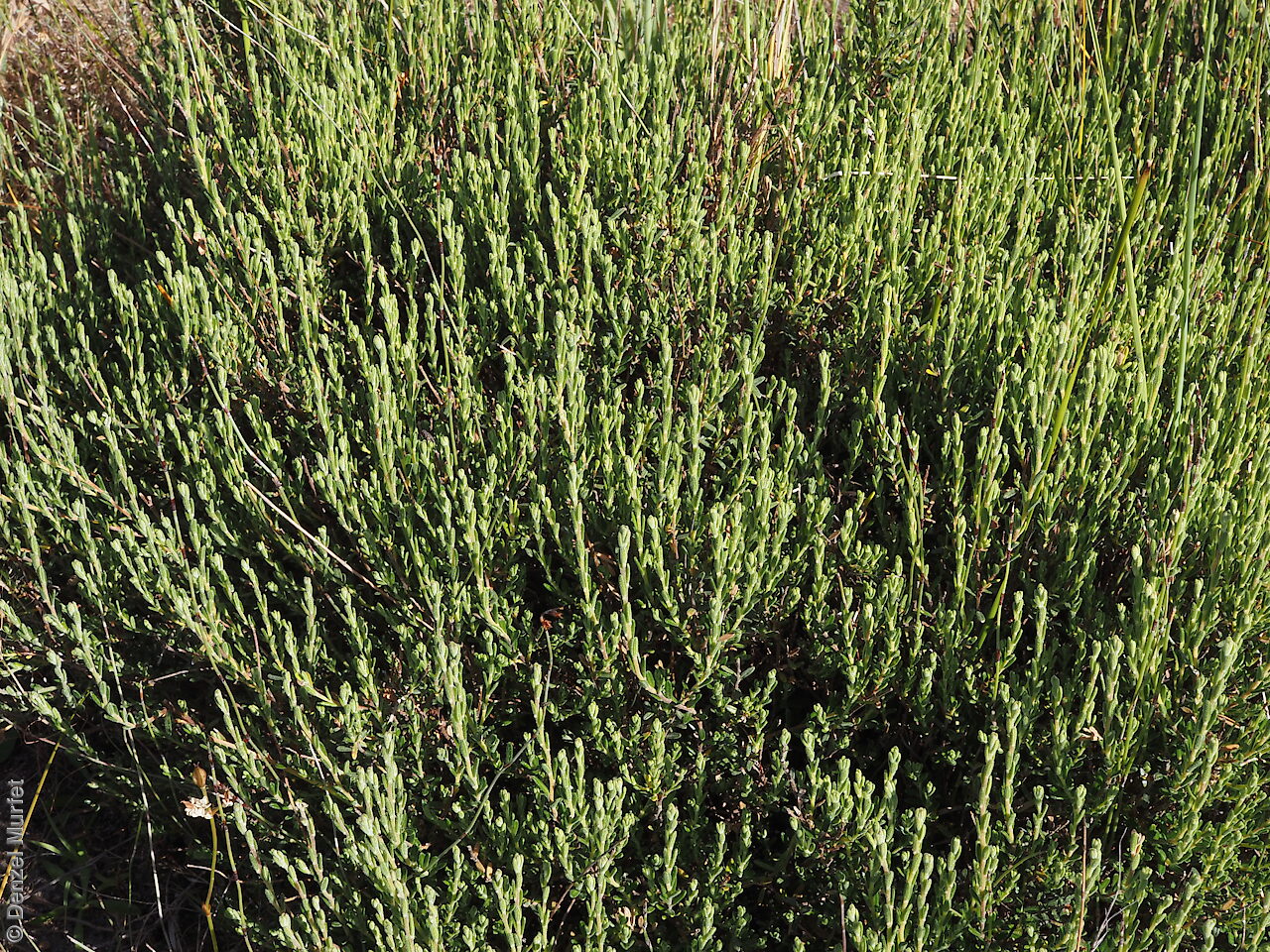
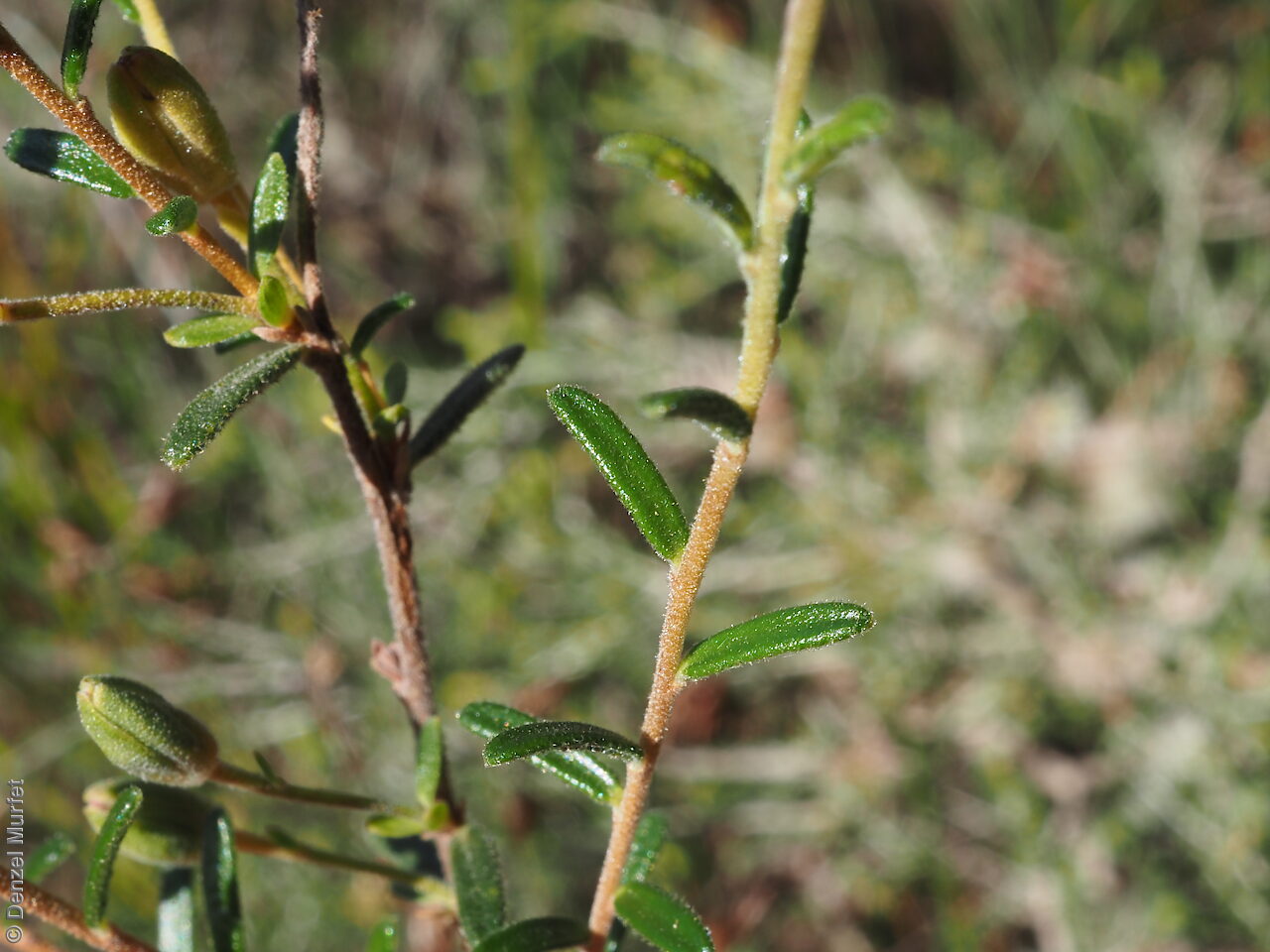
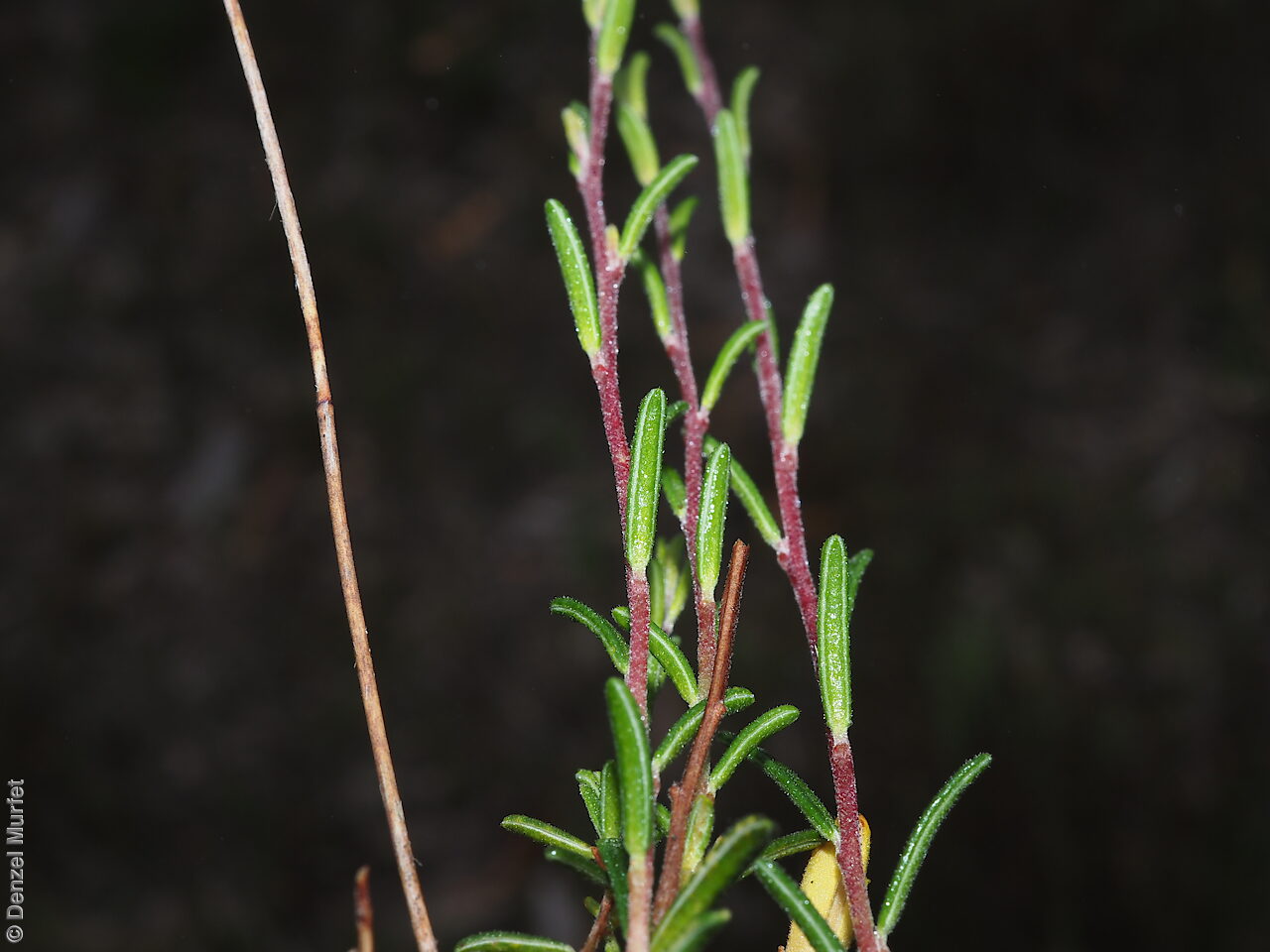
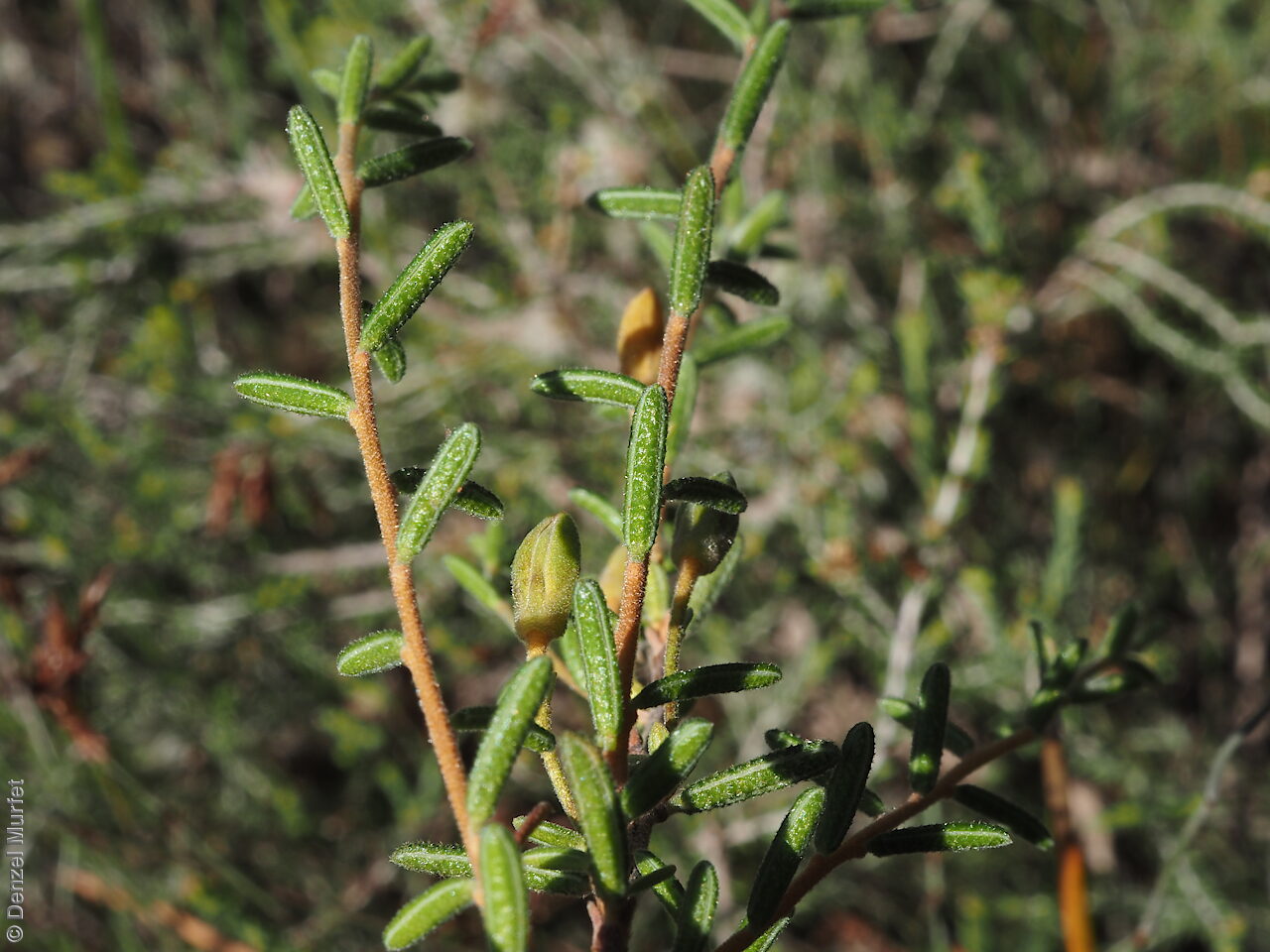

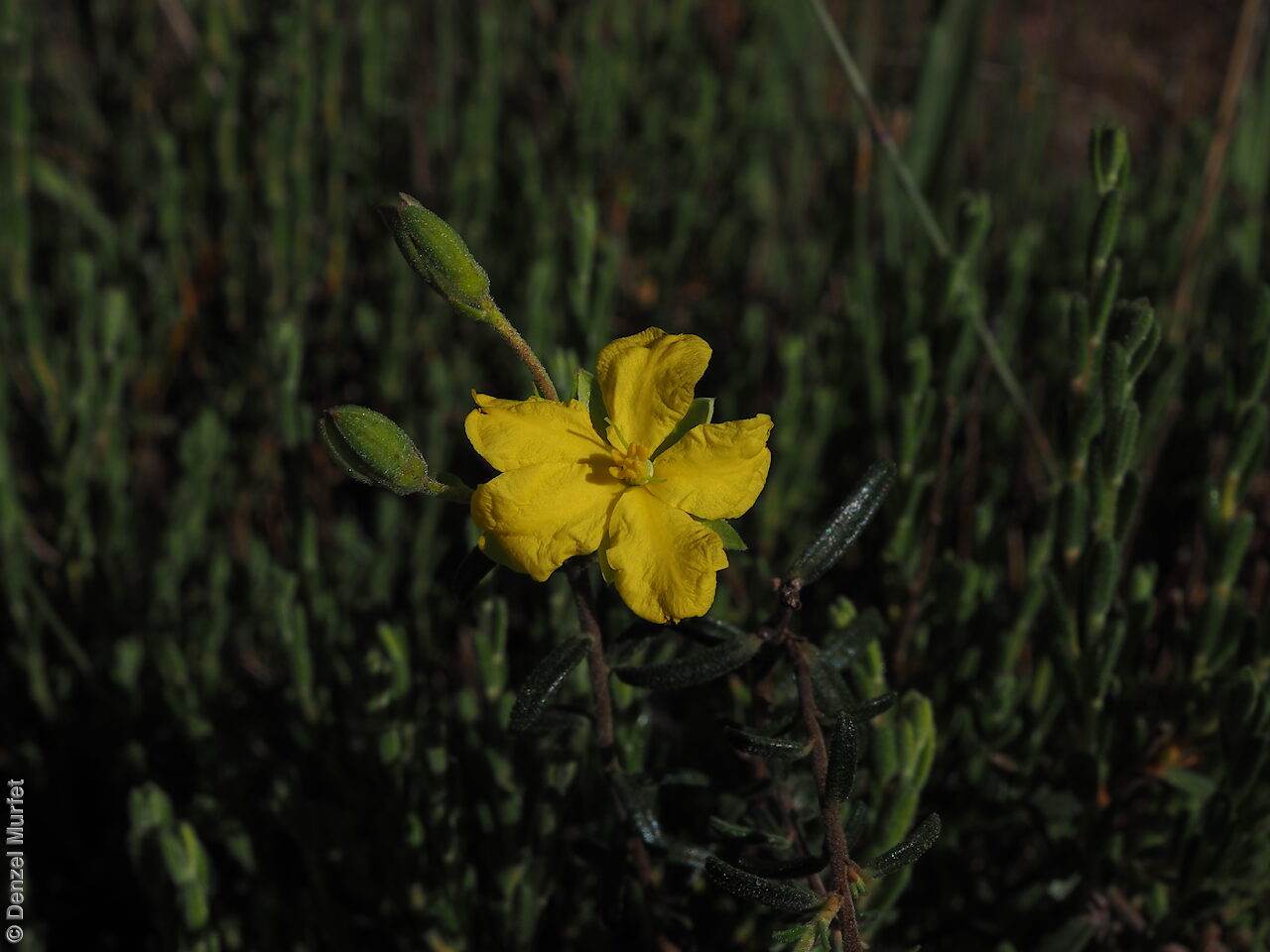
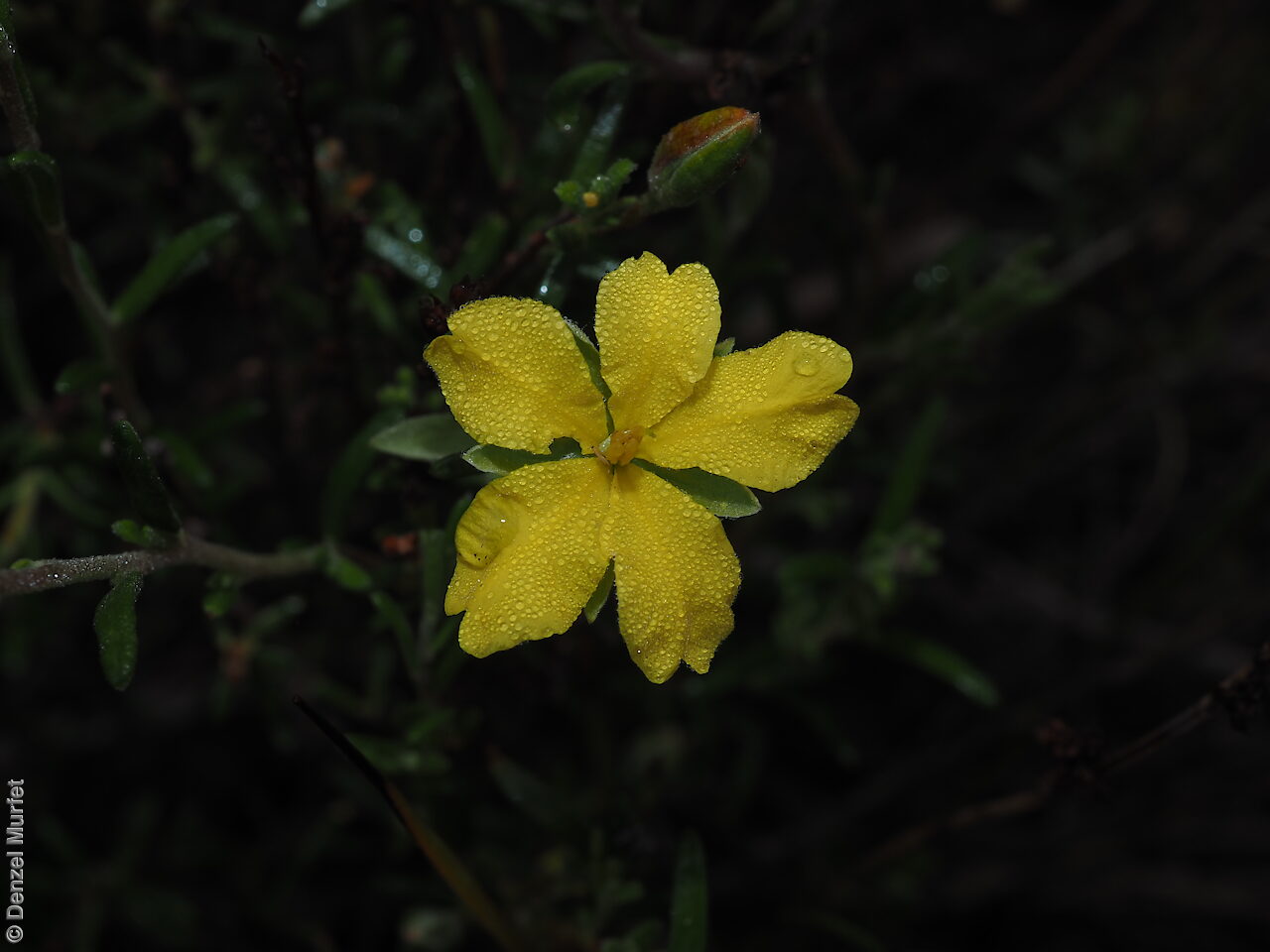
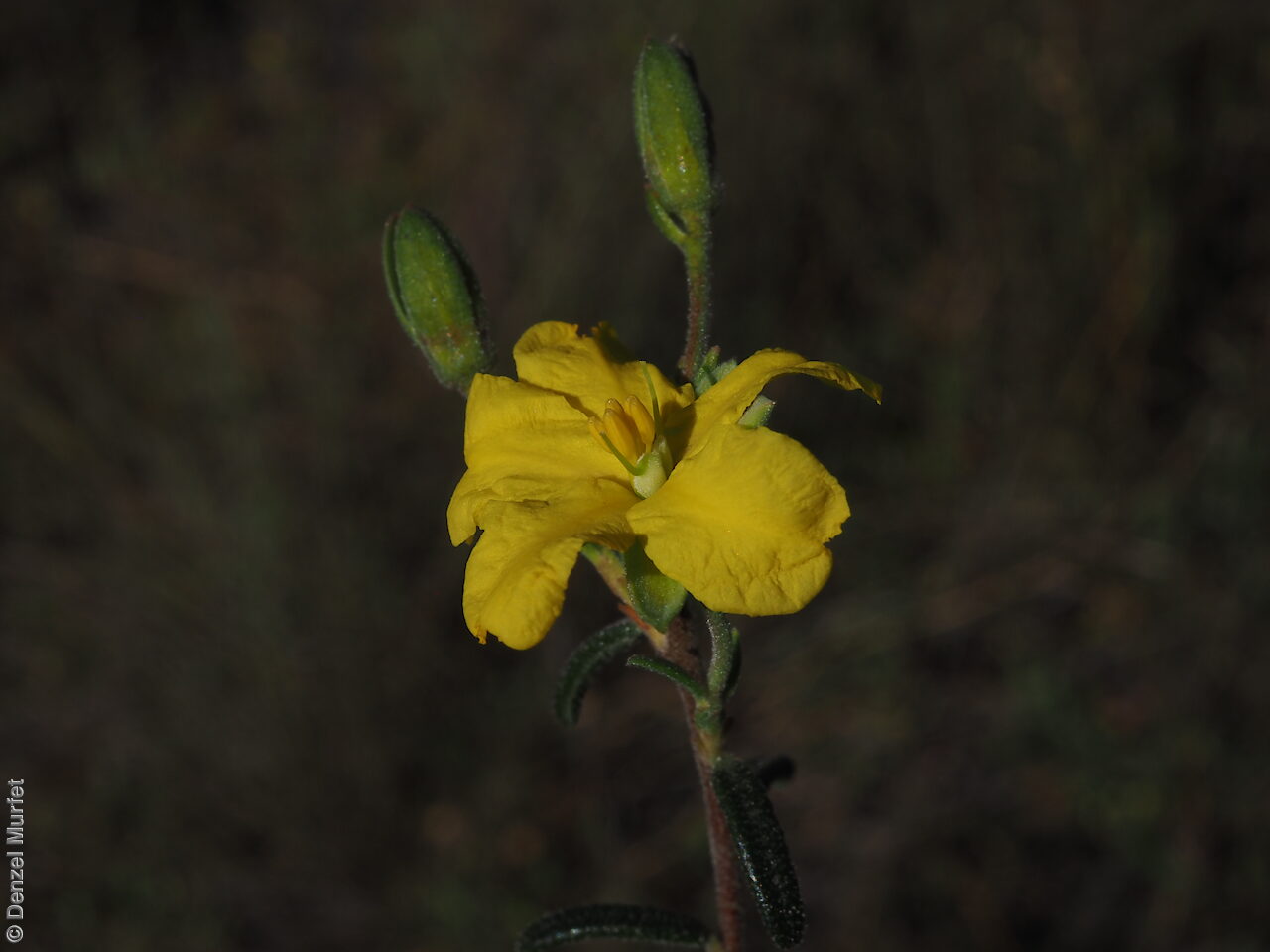
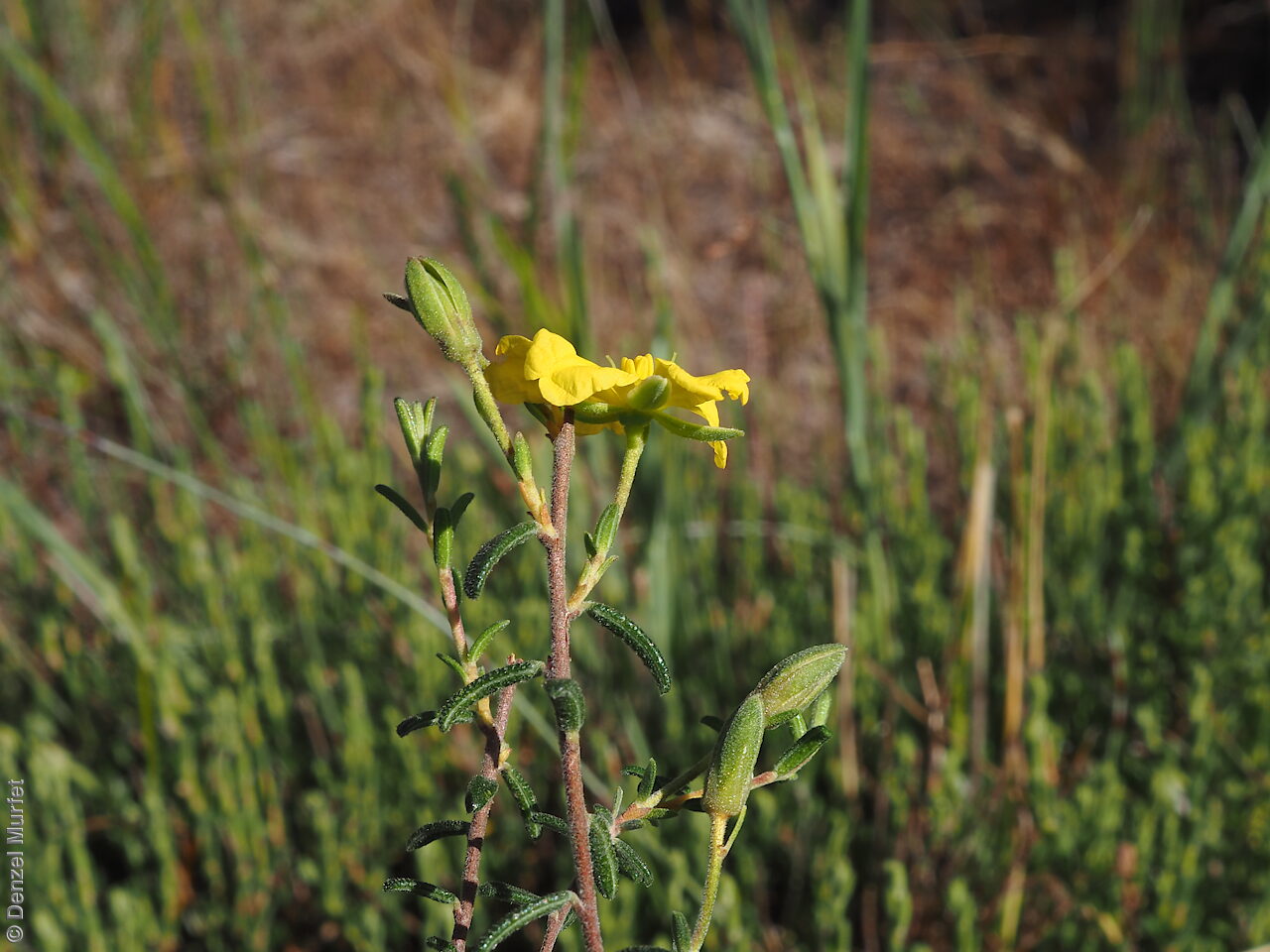
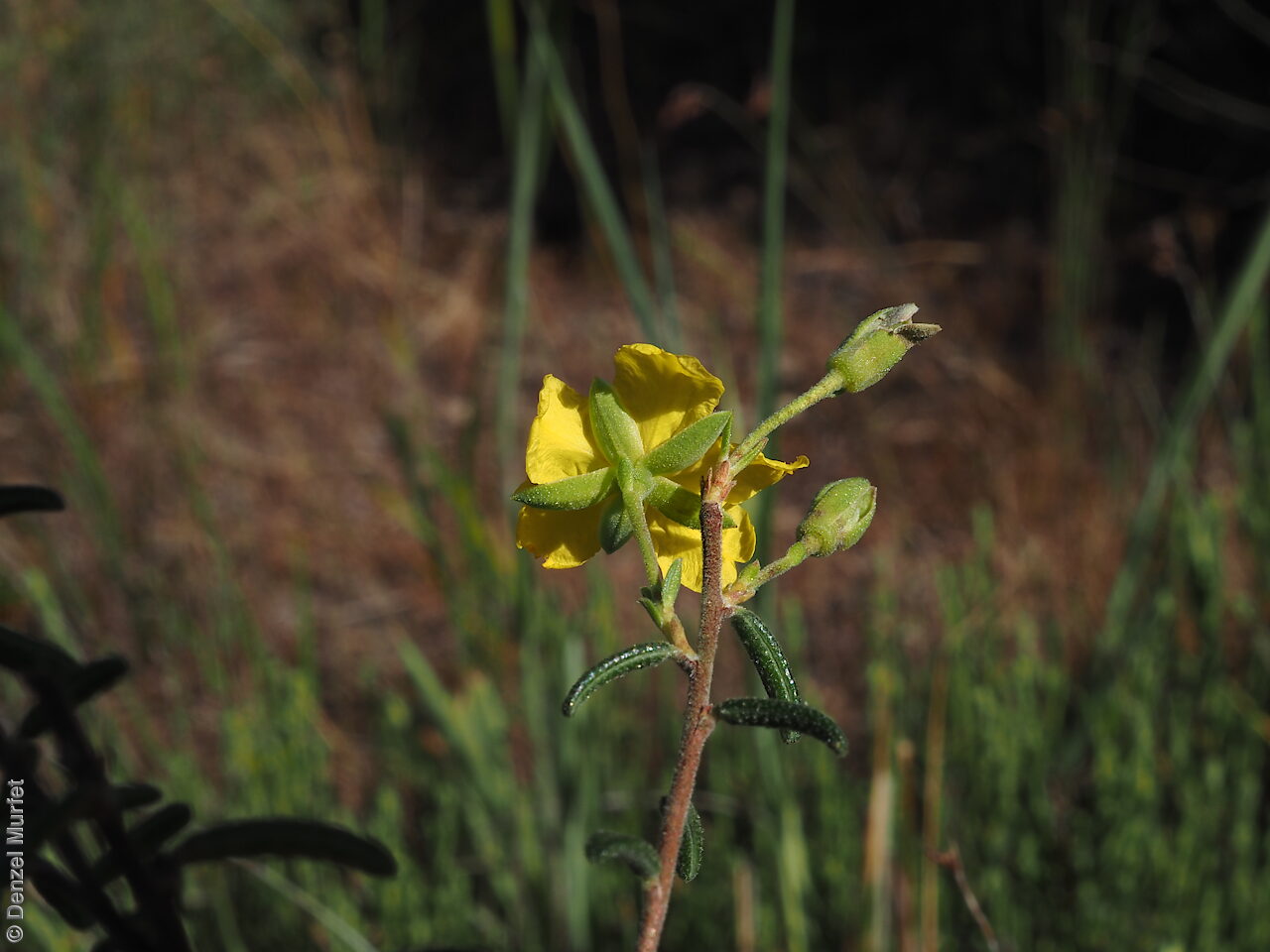
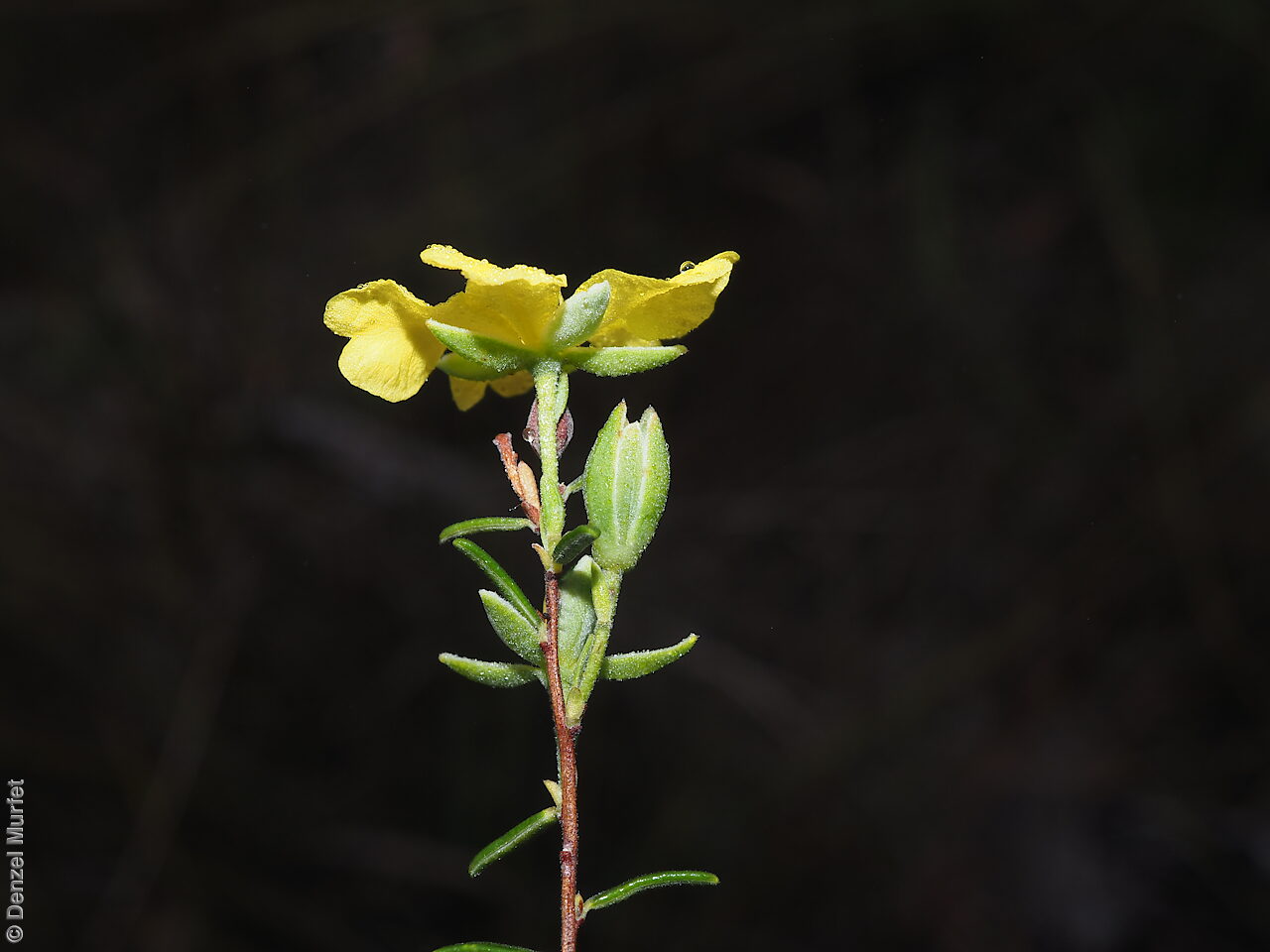
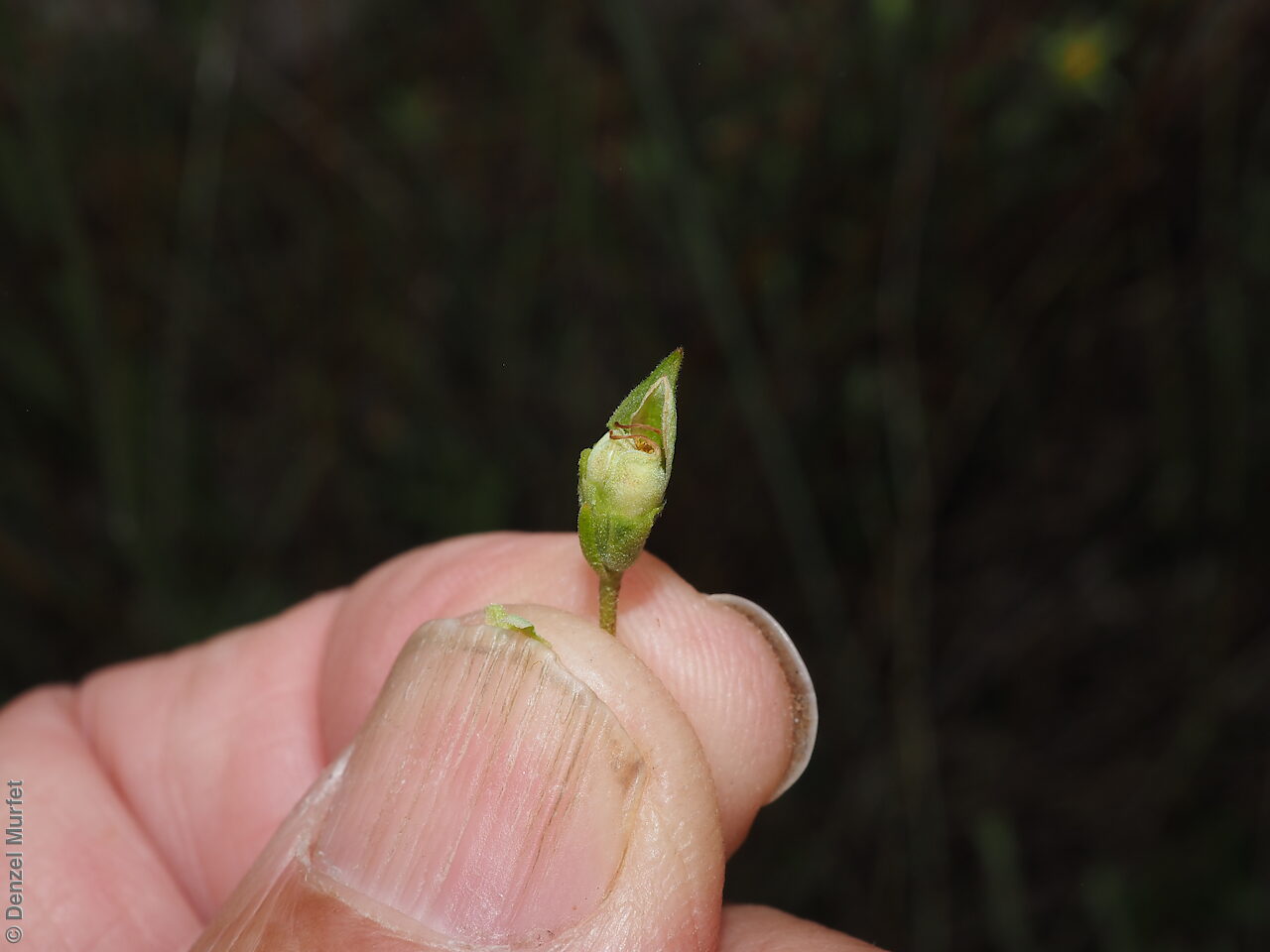
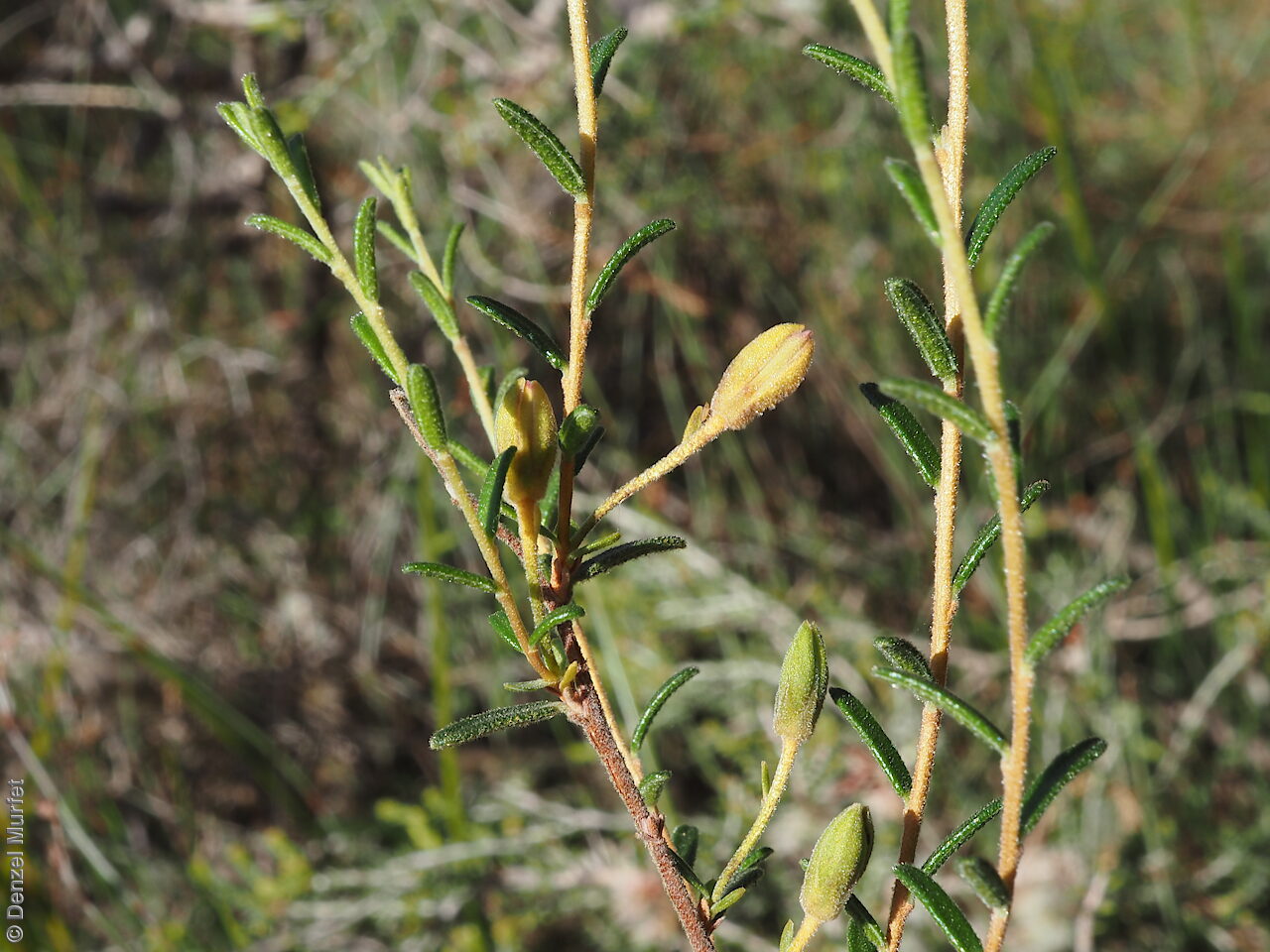

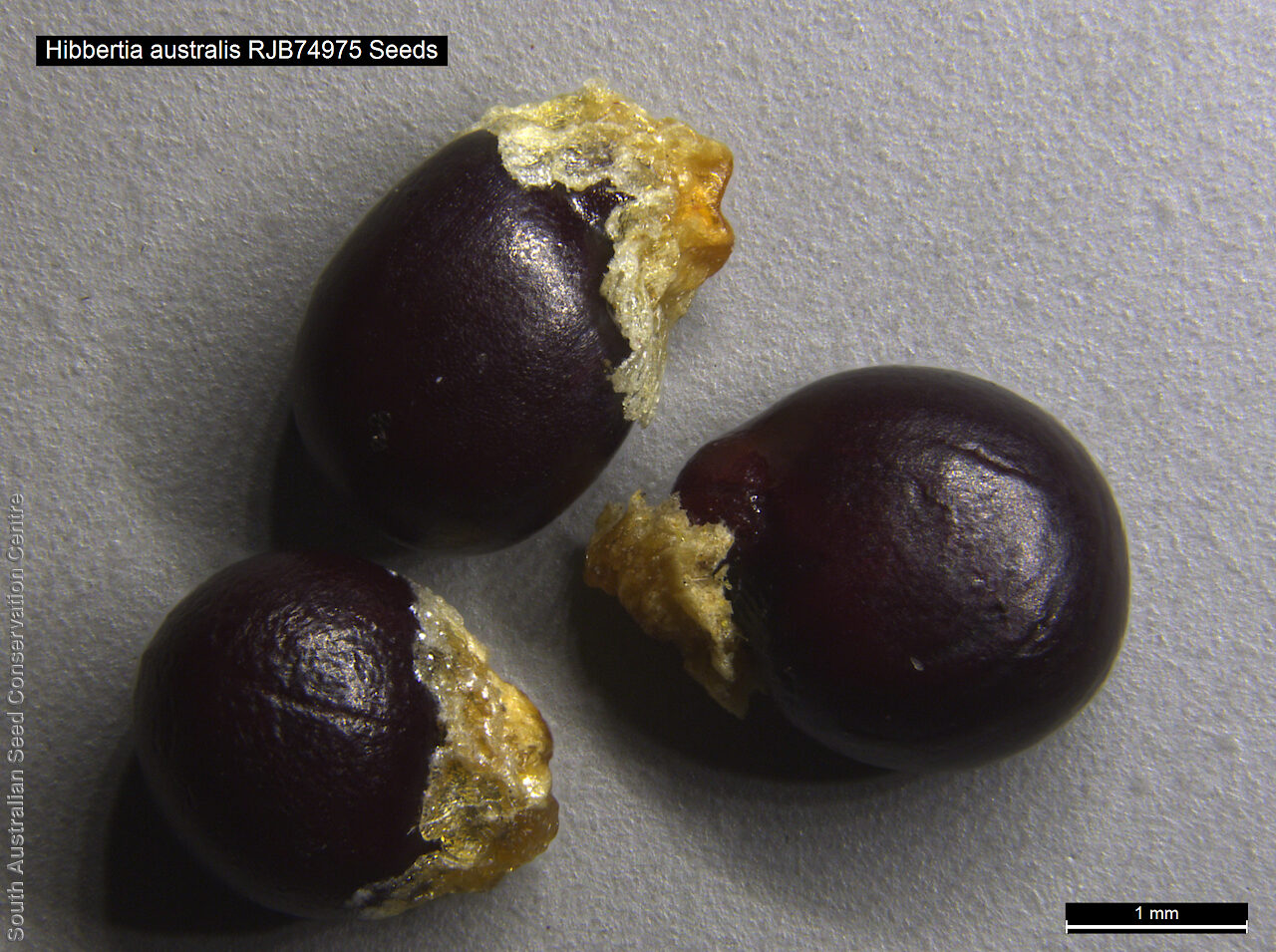


Botanical art
Prior names
Hibbertia stricta, partly
Common names
Erect Guinea-flower
Stalked Guinea-flower
Etymology
Hibbertia, named after George Hibbert (1757-1837), a London merchant who maintained a private botanic garden at Chelsea. Australis meaning of or from the south, referring to its more southern distribution.
Distribution and status
Found in the southern Mount Lofty Ranges and the lower South-east in South Australia, growing in wet or dry heath or woodland. Also found in Victoria. Native. Uncommon in South Australia. Uncommon in Victoria.
Herbarium regions: Northern Lofty, Southern Lofty, South Eastern, Green Adelaide
AVH map: SA distribution map (external link)
Plant description
Erect to spreading, rarely decumbent shrub to 0.6 m high; branches pubescent. Leaves linear, to 16 mm long and 2 mm wide, pubescent to glabrescent; apex obtuse or rounded; margins broad recurved, touching the slightly raised, broader central ridge. Flowers yellow, on pedicels to 25 mm long; terminal but often on short shoots. This species may be distinguished from Hibbertia riparia and allied taxa by the stalked flowers that are on peduncles at least 5 mm long, and the bracts that are clearly distinguished from leaves rather than leaf-like. Flowering between September and December. Fruits are brown hairy capsule with 3 carpels. Seeds are brown ovoid seed to 3 mm long and 2 mm wide.
Seed collection and propagation
Collect seeds between October and February. Collect mature capsules, that are turning a pale straw colour and contain brown seeds. Place the capsules in a tray and leave to dry for one to two weeks. Then rub the capsules gently by hand to dislodge the seeds. Use a sieve to separate the unwanted material. Store the seeds with a desiccant such as dried silica beads or dry rice, in an air tight container in a cool and dry place. This genus tends to have low seed viability. From one collection, the seed viability was average, at 65%. This species has morpho-physiological dormancy and can be difficult to germinate.
| Location | No. of seeds (weight grams) | Number of plants | Date collected | Collection number Collection location | Date stored | % Viability | Storage temperature |
|---|---|---|---|---|---|---|---|
| BGA MSB | 3,800 (13.2 g) 3,800 (13.2 g) | 50 | 22-Oct-2007 | RJB74975 Southern Lofty | 19-Sep-2008 | 65% | -18°C |
Number of plants: This is the number of plants from which the seeds were collected.
Collection location: The Herbarium of South Australia's region name.
% Viability: Percentage of filled healthy seeds determined by a cut test or x-ray.